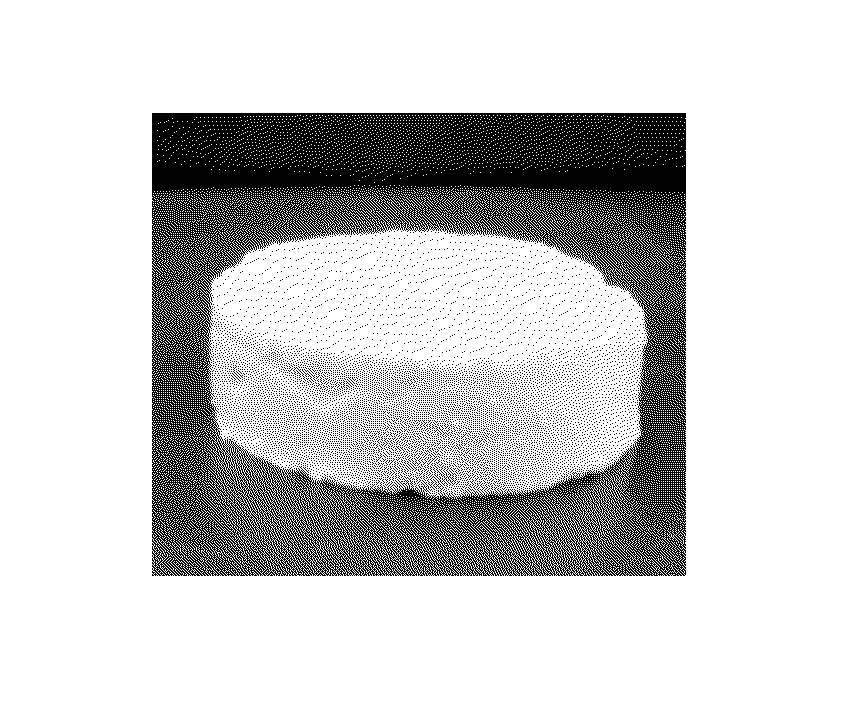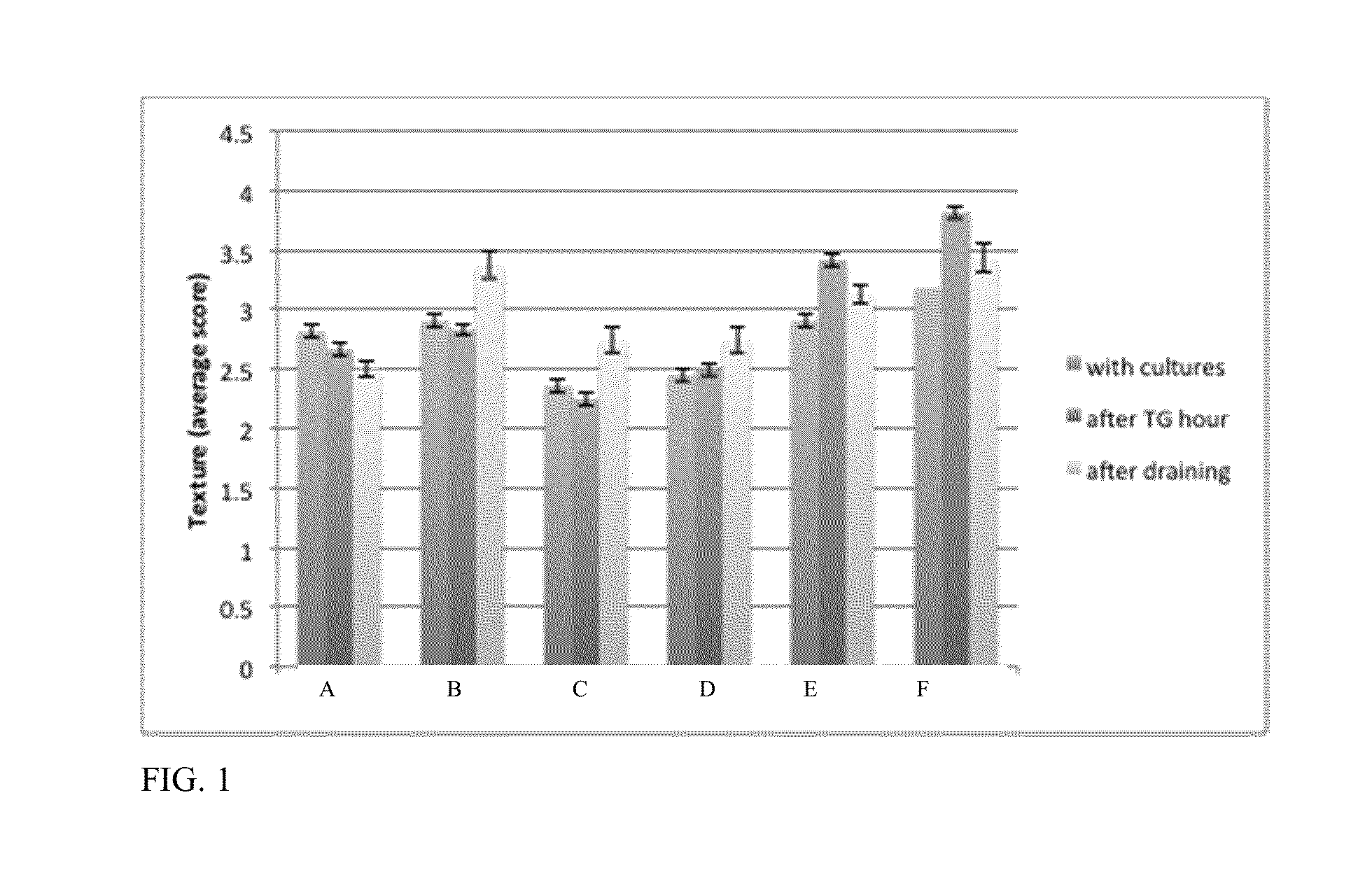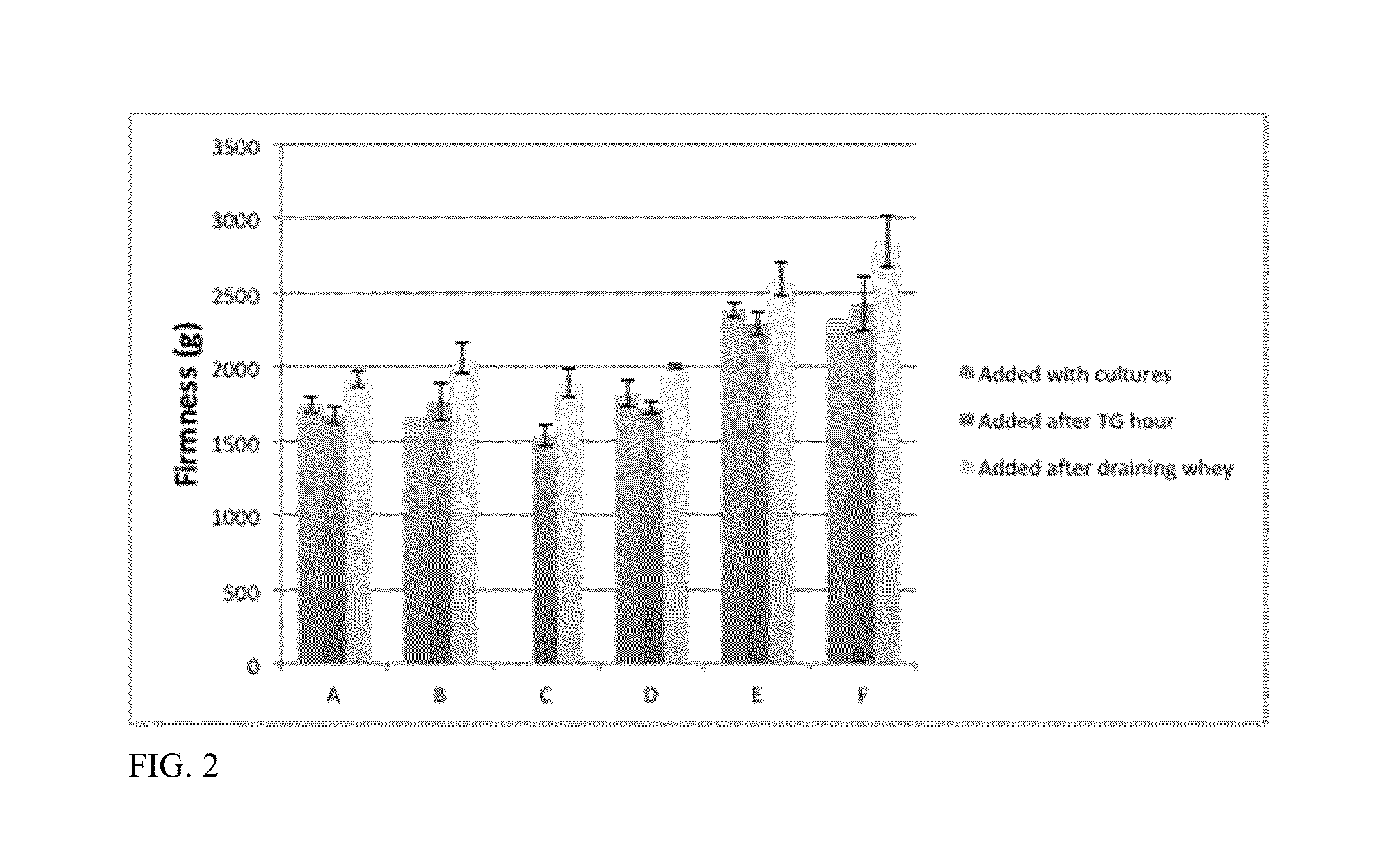Methods and compositions for consumables
a technology of consumables and compositions, applied in the field of consumables methods and compositions, can solve the problems of increasing the osmotic pressure of the colon contents, increasing the osmotic pressure of the colon, and rennet being not an effective agent for inducing non-dairy proteins or emulsions, so as to minimize the effect of minimizing one or more undesirable odors
- Summary
- Abstract
- Description
- Claims
- Application Information
AI Technical Summary
Benefits of technology
Problems solved by technology
Method used
Image
Examples
example 1
The Use of Enzymes to Improve Non-Dairy Cheese Replica Texture
[0246]Soft ripened (SR) cheese replicas were created with proteases and lipases added at different time points and evaluated for the ability of the proteases and lipases to modulate the texture of the replicas. Eighteen cheese replicas were made with pasteurized almond and macadamia nut milk (see Example 20). The nut milk was cultured with 0.03% MA11, 0.15% Flora Danica, 0.0045% Geotrichum candidum, 0.009% Penicillium candidum, and 0.007% Debaryomyces hansenii cultures, then crosslinked with 0.5% transglutaminase (ACTIVA TI, from Ajinomoto). Five different combinations of a protease and / or a lipase were examined, along with three controls without protease or lipase as follows: A=papain 0.02%, B=Fromase™ (an aspartic protease from Rizomucor with a similar specificity to chymosin from rennet), 0.004%, C=papain 0.01%+Fromase™ 0.002%, D=papain 0.02%+Lipase G 0.001%, E=papain 0.01%, PC lipase 0.0001% and F=control. The proteas...
example 2
The Use of Enzymes to Improve Non-Dairy Cheese Replica Flavor (to Create Flavor that is Indistinguishable from a Comparable Dairy Cheese)
[0249]Soft fresh (SF) cheese replicas (Example 21) created with proteases and lipases added at different times during the creation of the cheese replicas were evaluated for the ability of the proteases and lipases to modulate the flavor of the non-dairy cheese replicas. Eighteen cheese replicas were made with pasteurized almond and macadamia nut milk as detailed in Example 1. Five different combinations of protease and / or lipase mixtures were examined, along with three controls without protease or lipase as follows: A=Fromase™ 0.004%, B=Papain 0.02%+Lipase G 0.001%, C=control (no protease or lipase), D=Papain 0.02%, E=Papain 0.01%+Fromase™ 0.002%, and F=Papain 0.01%+PC lipase 0.0001%. The proteases and lipases were added at these three times: with the cultures, after crosslinking had started, and after draining the whey.
[0250]Blind taste testers an...
example 3
Selection of Desired Lactic Acid Bacteria
[0257]Twenty-one (21) individual bacterial strains were isolated from the commercial products MA11, MA14, MA19 and Flora Danica. These mixed direct vat cultures were plated on non-selective media and screened by PCR with primers (Table 3) that were designed specifically to distinguish among the various strains (Table 2, where LLL refers to Lactococcus lactis lactis, LLC refers to Lactococcus lactis cremoris, LM refers to Leuconostoc mesenteroides, and LLBD refers to Lactococcus lactis biovar diacetylactis. Table 2 depicts the individual isolated strains from the starter cultures. The first column identifies the source of the isolated strains, and the first row depicts the bacterial subspecies classification of the individual strains. In some cases it was exploited that certain strains, e.g., LLC, grew poorly on certain media (e.g., LB+ glucose) and the smallest colonies were selected for PCR analysis.
TABLE 2List of isolated bacterial strainsS...
PUM
 Login to View More
Login to View More Abstract
Description
Claims
Application Information
 Login to View More
Login to View More - R&D
- Intellectual Property
- Life Sciences
- Materials
- Tech Scout
- Unparalleled Data Quality
- Higher Quality Content
- 60% Fewer Hallucinations
Browse by: Latest US Patents, China's latest patents, Technical Efficacy Thesaurus, Application Domain, Technology Topic, Popular Technical Reports.
© 2025 PatSnap. All rights reserved.Legal|Privacy policy|Modern Slavery Act Transparency Statement|Sitemap|About US| Contact US: help@patsnap.com



